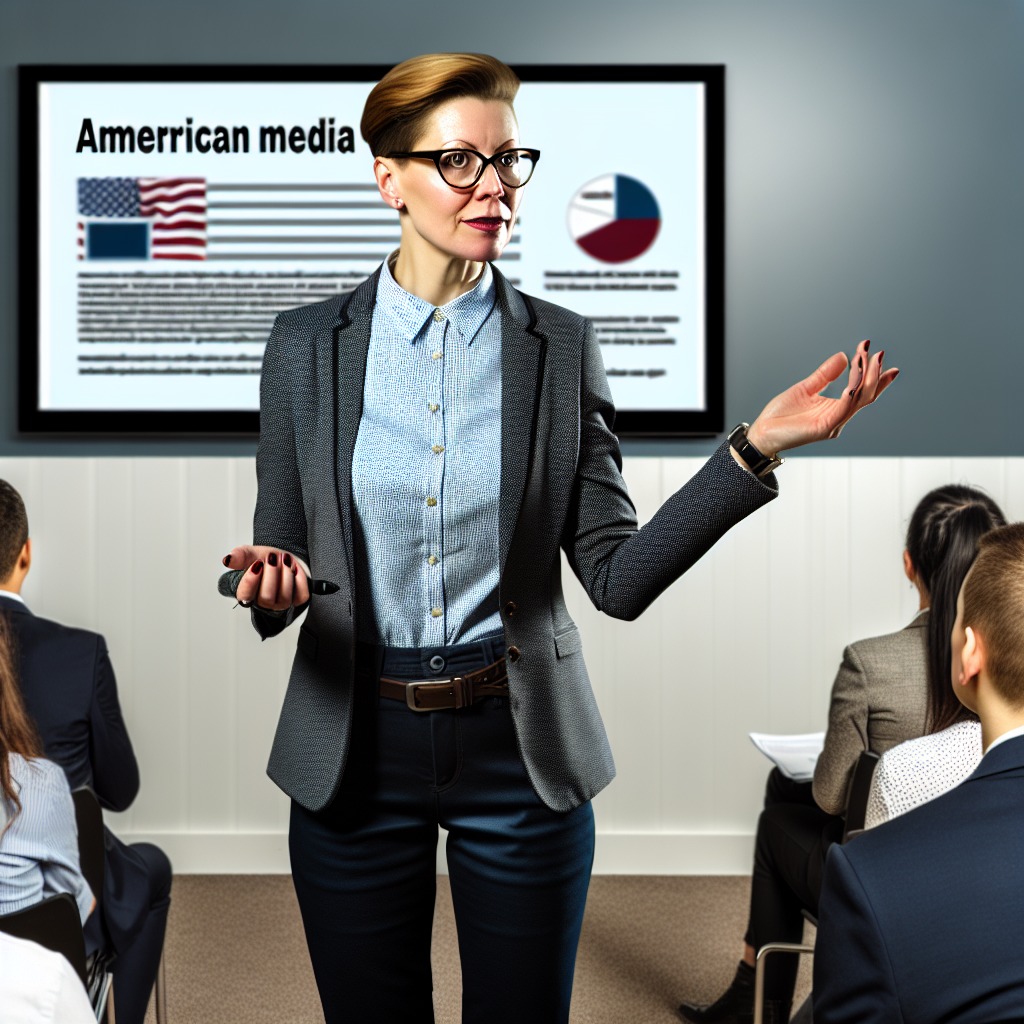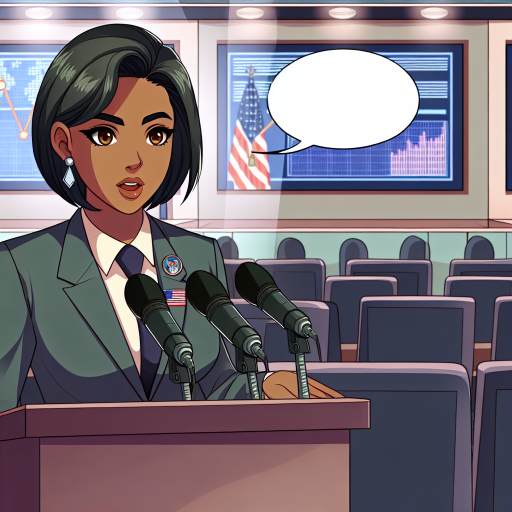Introduction
Communication skills encompass the ability to convey ideas clearly and effectively.
In media training, these skills are essential for both trainers and trainees.
Media trainers must use precise language and tone.
They should know how to engage their audience and respond to feedback.
Effective communication plays a critical role for media trainers.
It enables trainers to share knowledge and skills with confidence.
Clear communication fosters a supportive learning environment.
It helps trainees grasp complex concepts and apply them in real-world situations.
Moreover, strong communication skills build rapport between trainers and participants.
This connection enhances learning and encourages participant involvement.
This blog post will explore the essential communication skills media trainers need.
We will first discuss verbal and non-verbal communication techniques.
Next, we will examine active listening and its impact on understanding.
We will also address the importance of adapting communication styles to diverse audiences.
Finally, we will highlight practical tips for improving communication skills in media training.
The Role of Media Trainers
Media trainers play a crucial role in preparing individuals for public speaking and communication.
They help clients articulate ideas effectively across various media platforms.
Their responsibilities extend beyond mere instruction.
Media trainers equip clients with essential tools to navigate the dynamic landscape of communication.
Responsibilities of Media Trainers
The responsibilities of media trainers can be quite comprehensive.
Transform Your Career Today
Unlock a personalized career strategy that drives real results. Get tailored advice and a roadmap designed just for you.
Start NowThey generally include the following:
-
Assessing Client Needs: Media trainers conduct evaluations to understand the communication strengths and weaknesses of their clients. This assessment guides their training approach and materials.
-
Developing Training Programs: They create customized training programs that cater to the specific communication needs of the clients. These programs often include workshops, one-on-one sessions, and practical exercises.
-
Enhancing Presentation Skills: Trainers focus on improving clients’ presentation skills. They teach techniques for engaging audiences, controlling body language, and managing stage presence.
-
Providing Media Coaching: Trainers prepare clients for different media formats such as television interviews, radio broadcasts, and online podcasts. They offer strategies for effective communication in each context.
-
Conducting Practice Sessions: Media trainers facilitate practical exercises where clients can practice their communication skills. These sessions often involve mock interviews and presentations.
-
Offering Constructive Feedback: Providing feedback is essential for growth. Trainers give clients critical insights on their performance, helping them recognize areas for improvement.
-
Staying Updated on Media Trends: Successful media trainers continuously seek knowledge about evolving media trends and technologies. This ensures their training remains relevant and effective.
Skills and Traits of Successful Media Trainers
To excel as a media trainer, specific skills and traits define success in this field.
-
Strong Communication Skills: Effective media trainers communicate clearly and persuasively. They must articulate ideas in a manner that clients can comprehend easily.
-
Active Listening: They demonstrate exceptional listening skills. This quality allows trainers to understand clients’ concerns and tailor their guidance appropriately.
-
Empathy: Successful trainers show empathy toward their clients. They understand the pressures of public speaking and provide support throughout the training process.
-
Adaptability: Media trainers must adapt to various learning styles and personalities. Their ability to modify training methods enhances effectiveness.
-
Knowledge of Media Practices: A solid grasp of different media formats, ethics, and audience engagement strategies is critical. This knowledge enriches training sessions.
-
Creativity: Trainers often need to be creative in delivering content. Innovative approaches keep clients engaged and motivated throughout the training.
-
Confidence: Trainers should exude confidence in their delivery and training methods. This not only earns clients’ trust but also instills confidence in them.
The Impact of Communication on Training Effectiveness
Effective communication significantly influences training outcomes.
Several factors illustrate this impact:
-
Clarity of Instruction: Clear instructions facilitate better understanding. Clients who grasp concepts quickly progress faster in their training.
-
Engagement Levels: Effective communicators engage their audiences. High engagement ensures better retention of information and skills.
-
Building Rapport: Strong communication fosters rapport between trainer and client. A positive relationship encourages open dialogue and trust.
-
Feedback Reception: Clear communication channels enhance how clients receive feedback. Clients more readily accept constructive criticism that is delivered effectively.
-
Motivation and Confidence: Trainers who communicate effectively inspire clients. Motivation derived from good communication methods boosts clients’ confidence.
-
Adaptability in Communication: Media trainers who understand the audience can tailor their communication style. This adaptability often leads to improved training outcomes.
Effective communication skills are interwoven into every facet of a media trainer’s responsibilities.
Without clear communication, the potential for improvement diminishes.
Therefore, trainers must consistently refine their communication techniques.
They should assess themselves and seek feedback on their delivery methods.
Furthermore, a trainer’s ability to relay information clearly influences the overall atmosphere of the training environment.
A positive environment cultivates enthusiasm and willingness to learn.
In contrast, a poor communication environment fosters anxiety and uncertainty.
Clients might struggle to fully engage, resulting in stunted growth.
Enhancing Communication Competencies
Media trainers hold a vital role in enhancing communication competencies.
They embody various responsibilities that require mastery in several skills and traits.
Additionally, effective communication is a cornerstone of successful training.
The continual development of these skills not only benefits the trainers but also leads to transformative outcomes for their clients.
Media trainers must commit to honing their craft, adapting to changes, and perpetually striving for excellence in communication.
Effective Communication Skills for Media Trainers
Effective communication is crucial for media trainers.
Trainers must convey information accurately and engage their audience effectively.
Showcase Your Business Today
Reach thousands of readers actively exploring professional services. Publish your business profile and grow your audience now.
Publish NowHere, we explore the essential communication skills needed to excel in this role.
Verbal Communication
Verbal communication forms the backbone of any training session.
It involves the transmission of messages through spoken words.
Each trainer must prioritize clarity and conciseness.
This approach helps listeners easily grasp complex ideas.
Here are some tips:
- Use simple language: Avoid jargon and overly technical terms. You want everyone to understand you.
- Be direct: Get to the point quickly. This keeps the audience engaged and focused.
- Organize thoughts: Structure your message logically. This helps the audience follow your ideas easily.
- Summarize key points: Reiterate important concepts at the end. This reinforces learning and retention.
- Ask for feedback: Encourage questions and interactions. This clarifies misunderstandings and fosters engagement.
Effective verbal communication enhances training quality significantly.
Media trainers who master this skill will see better engagement from their trainees.
Tone and Pace in Delivering Messages
- Vary your tone: A monotonous delivery can bore the audience. Use inflection to highlight important points.
- Adjust your pace: Speaking too fast can confuse listeners. Slow down to allow processing time.
- Use pauses effectively: Pauses can emphasize key points. They also give the audience time to absorb information.
- Be enthusiastic: Your excitement can be contagious. Show passion for the subject!
- Match tone to content: Serious subjects require a somber tone. Lighter topics can be delivered with a more upbeat attitude.
Trainers must pay close attention to their tone and pace.
These elements significantly influence how messages are perceived and understood.
The right adjustments can turn an ordinary presentation into an engaging experience.
Non-Verbal Communication
Non-verbal communication includes all forms of communication that do not involve words.
Body language, facial expressions, eye contact, and gestures play vital roles in effective media training.
Non-verbal cues can reinforce verbal messages or contradict them, hence their importance.
Body Language and Facial Expressions
- Maintain open posture: Crossed arms can signal defensiveness. Keep your body open to appear approachable.
- Use facial expressions: Your face conveys emotions. Smile to create a welcoming atmosphere.
- Be mindful of gestures: Natural gestures can emphasize your points. However, avoid overusing them, as they can distract.
- Nod to show understanding: This encourages speakers and affirms their message. It enhances audience engagement.
- Pay attention to space: Respect personal space, but also use the area to create a connection with your audience.
The impact of body language and facial expressions cannot be underestimated.
They can enhance connectivity with the audience, making messages more relatable and impactful.
The Role of Eye Contact and Gestures
- Establish eye contact: This engages listeners and shows confidence. It helps build trust between the trainer and the audience.
- Use gestures for emphasis: Pointing, waving, or illustrating with your hands can highlight important information.
- Scan the audience: Make eye contact with various attendees. This makes everyone feel included and valued.
- Observe audience reactions: Pay attention to the audience’s expressions. This can guide your pacing and content delivery.
- Maintain a relaxed demeanor: Relaxed trainers foster a comfortable learning environment. This encourages participants to join the conversation.
The right eye contact and gestures crystallize your message’s intent.
When delivered effectively, they can elevate a training session from mundane to memorable.
Effective communication skills are vital for media trainers.
Mastering verbal and non-verbal communication greatly enhances any trainer’s ability to engage their audience.
Clarity and conciseness ensure that messages are understood.
In contrast, tone and pacing add layers of meaning to spoken words.
Additionally, observing body language, gestures, and eye contact can enhance connections with trainees.
By honing these skills, media trainers can truly transform their teaching and, ultimately, their trainees’ learning experiences.
Uncover the Details: Networking Tips for Brand Strategists: Building Connections
Effective Communication for Media Trainers
Effective communication is vital for media trainers.
One of the most important skills in communication is active listening.
This section will define active listening, emphasize its importance, and provide techniques to enhance listening skills.
Definition and Importance of Active Listening
Active listening goes beyond just hearing words.
It involves fully concentrating, understanding, responding, and remembering what the speaker says.
Media trainers need this skill to facilitate effective discussions and training sessions.
Active listening promotes deeper understanding between trainers and participants.
It encourages an open exchange of ideas.
When trainers listen actively, they validate participants’ feelings and perspectives.
This practice fosters trust and builds a positive learning environment.
Moreover, active listening can prevent misunderstandings.
It helps trainers gauge participants’ reactions, enabling them to adjust their teaching strategies accordingly.
This adaptability leads to more effective training and engagement.
Techniques to Enhance Listening Skills
Media trainers can adopt several techniques to improve their active listening skills:
- Give Full Attention: Make eye contact with the speaker. Show genuine interest in their words.
- Avoid Distractions: Turn off your phone and close unnecessary tabs on your computer. Create a focused environment.
- Practice Nonverbal Communication: Nodding, maintaining an open posture, and using facial expressions can show you are engaged.
- Reflective Listening: Summarize what the speaker has said to confirm understanding. Paraphrase their ideas in your own words.
- Ask Open-Ended Questions: Encourage further discussion by asking questions that require thoughtful responses.
- Manage Your Responses: Avoid jumping to conclusions. Allow the speaker to finish before responding.
- Be Empathetic: Try to understand the speaker’s feelings and perspectives. Empathy fosters connection and trust.
- Practice Patience: Resist the urge to interrupt. Allow silence to encourage the speaker to elaborate.
How Active Listening Aids in Understanding and Engagement
Active listening significantly enhances understanding in training settings.
Showcase Your Business Today
Reach thousands of readers actively exploring professional services. Publish your business profile and grow your audience now.
Publish NowWhen trainers actively listen, they grasp the nuances of participants’ messages.
This understanding allows trainers to tailor their instruction effectively.
Active listening also promotes engagement.
When participants feel heard, they are more likely to contribute to discussions.
This creates a dynamic learning atmosphere where ideas freely flow.
Furthermore, active listening fosters a sense of community within training sessions.
It can lead to stronger relationships among team members.
Participants often express their thoughts more openly when they feel others value their input.
Benefits of Active Listening in Training
Incorporating active listening brings numerous benefits to media trainers:
- Improved Training Outcomes: Active listening leads to a better understanding of the content. Participants grasp concepts more firmly.
- Enhanced Problem Solving: When trainers listen attentively, they identify issues promptly. This makes it easier to address challenges head-on.
- Increased Job Satisfaction: Participants enjoy sessions where they feel acknowledged. This boosts overall satisfaction with the training process.
- Stronger Leadership Skills: Media trainers who listen well become better leaders. They inspire trust and motivate participants effectively.
Practical Exercises to Develop Active Listening Skills
To enhance your active listening skills, consider the following practical exercises:
- Role-Playing: Pair with a colleague. Practice scenarios in which one listens actively while the other speaks.
- Listening Journals: Keep a journal of interactions. Reflect on how well you listened and areas for improvement.
- Feedback Sessions: After group discussions, ask for feedback on your listening skills. Use this input to enhance your approach.
- Mindful Listening: Engage in mindfulness exercises. These can help you be more present during conversations.
Importance of Active Listening for Media Trainers
Active listening is a cornerstone of effective communication for media trainers.
It allows trainers to connect deeply with participants.
By implementing listening techniques, trainers can foster a more engaging learning environment.
The benefits of active listening extend far beyond individual sessions.
Trainers build bridges of understanding that facilitate collaboration and growth.
Therefore, developing this skill should be a priority for anyone in the field of media training.
In today’s fast-paced world, mastering active listening sets trainers apart.
This skill transforms the traditional lecture model into an engaging dialogue.
As trainers, embracing active listening will enhance your effectiveness and the overall experience of your participants.
You Might Also Like: How to Deal with SEO Penalties and Recover
Identifying Different Audience Types in Media Training
In media training, recognizing your audience is vital.
Media trainers often engage with diverse groups.
Each group possesses unique needs and expectations.
Identifying these types helps trainers tailor their messages effectively.
Here are common audience types:
- Corporate Clients: These individuals require professional communication. They expect clear data and actionable insights. Trainers must focus on practical applications.
- Journalists: Journalists thrive on concise and accurate information. They value storytelling and compelling narratives. Trainers should emphasize engaging delivery.
- Students: Students often seek practical skills. They may require a more interactive communication approach. Trainers must adapt to their learning styles.
- Non-Profit Organizations: Non-profits often focus on impact. Here, heartfelt messages resonate. Trainers should concentrate on emotional engagement.
- Government Officials: These individuals prioritize transparency and accountability. Trainers should provide comprehensive context and background on issues.
Strategies for Adapting Communication Styles
To ensure effective communication, trainers must adjust their styles.
Adapting is crucial in delivering training sessions.
Here are strategies to consider when modifying your communication:
- Assess Audience Knowledge: Determine what your audience already knows. This assessment will guide the depth of your content.
- Utilize Analogies and Metaphors: Relate complex ideas to familiar concepts. This technique simplifies communication and enhances understanding.
- Vary Delivery Methods: Use visuals, storytelling, and interactive exercises. Engage the audience through different modalities.
- Encourage Feedback: Foster an open dialogue for questions and comments. Feedback enhances clarity and reinforces learning.
- Be Empathetic: Understand the audience’s perspective and concerns. Empathy builds rapport and trust.
The Significance of Cultural Awareness and Sensitivity
Cultural awareness plays a significant role in media training.
Trainers must be sensitive to cultural differences.
Ignoring cultural nuances can lead to misunderstandings.
Here are key aspects of cultural awareness to keep in mind:
- Understanding Cultural Norms: Different cultures have varying communication styles. Awareness of these norms prevents conflicts.
- Recognizing Language Barriers: Language differences can hinder understanding. Use clear, simple language to bridge gaps.
- Being Mindful of Non-Verbal Communication: Non-verbal cues vary across cultures. Misinterpretations can alter intended messages.
- Respecting Diverse Values and Beliefs: Cultures prioritize different values. Acknowledging this fosters inclusivity.
- Adapting Content to Cultural Contexts: Tailor examples and case studies to match the audience’s culture. This relevance enhances engagement.
Effective communication for media trainers requires targeting their audiences properly.
By identifying audience types, adapting communication styles, and considering cultural sensitivity, trainers can significantly enhance their effectiveness.
These skills not only boost learning outcomes but also build lasting relationships with trainees.
Crafting a message that resonates ensures successful media training sessions.
Explore Further: How to Use Screenwriting Software: A Beginner’s Guide
Effective communication relies heavily on feedback.
Media trainers must understand its significance.
Feedback acts as a mirror reflecting our communication style.
Showcase Your Business Today
Reach thousands of readers actively exploring professional services. Publish your business profile and grow your audience now.
Publish NowIt highlights strengths and identifies areas needing improvement.
This section explores the importance of feedback, methods for soliciting it, and examples of how it enhances communication skills.
Importance of Feedback in Communication
Understanding the value of feedback is crucial for media trainers.
Here are several reasons why feedback is vital:
- Enhances self-awareness: Feedback helps trainers recognize their communication blind spots.
- Improves message clarity: Feedback reveals whether the audience grasps the message.
- Strengthens relationships: Open communication fosters trust and rapport with participants.
- Encourages growth: Constructive criticism can motivate trainers to refine their skills.
- Informs future strategies: Feedback highlights successful techniques and areas to change.
Utilizing feedback effectively leads to significant improvements.
Media trainers enhance their abilities through consistent reflection.
They learn what resonates with their audience and adjust accordingly.
Methods for Soliciting and Incorporating Feedback
Trainers can employ various methods to gather feedback.
Here are some effective techniques:
- Surveys: Use anonymous online surveys for honest feedback from participants.
- One-on-one interviews: Schedule personal meetings to discuss individual experiences and suggestions.
- Observation: Allow trusted colleagues to observe sessions and provide their insights.
- Feedback forms: Distribute forms at the end of training sessions for immediate reactions.
- Peer reviews: Encourage fellow trainers to evaluate each other’s communication styles.
Incorporating feedback involves several strategies.
Trainers should:
- Stay open-minded: Be receptive to constructive critiques without taking them personally.
- Create action plans: Develop specific steps based on feedback to improve communication skills.
- Follow up: Revisit participants to see if changes positively affected their learning experience.
- Engage in self-reflection: Regularly consider how feedback aligns with personal observations.
- Set measurable goals: Establish clear objectives for skill improvement based on feedback.
Examples of How Feedback Can Enhance Communication Skills
Feedback serves as a catalyst for enhancing communication methods.
Here are compelling examples demonstrating its impact:
- Verbally delivered messages: A trainer discovers that their tone is perceived as overly harsh through participant feedback. They adjust their approach, leading to a more welcoming environment, which fosters better learning.
- Presentation styles: After a session, a trainer receives feedback about using too many technical jargon terms. By simplifying language, they ensure information is more accessible, resulting in clearer understanding among participants.
- Non-verbal cues: Feedback reveals that a trainer’s body language may appear disengaged. By consciously improving eye contact and gestures, they become more engaging, leading to increased audience participation.
- Audience interaction: Participants express a desire for more interactive activities. The trainer incorporates brainstorming sessions, creating a dynamic environment that enhances the learning experience.
- Content clarity: After collecting feedback, a trainer identifies sections where information appeared confused. They revise their content structure, resulting in a more logical flow that enhances audience comprehension.
Each example illustrates how feedback transforms communication practices.
By observing what works and what doesn’t, trainers become more effective in their delivery.
Feedback as an Essential Tool for Media Trainers
Feedback stands as an essential tool for media trainers.
Understanding its importance cultivates self-awareness and addresses communication challenges.
By soliciting and incorporating feedback, trainers can refine their skills methodically.
The examples presented underscore feedback’s transformative power.
As trainers implement these strategies, they become more dynamic communicators, capable of facilitating engaging and impactful training sessions.
Uncover the Details: Press Secretary: Using Data for Effective Communication

Common Barriers to Effective Communication in Media Training
Media trainers often encounter a range of communication barriers that hinder the effectiveness of their training sessions.
Recognizing these obstacles is crucial for improving interactions and learning outcomes.
Here are some common barriers:
-
Language Differences: Trainers and participants may have different levels of language proficiency.
-
Cultural Differences: Diverse cultural backgrounds can lead to varied communication styles.
-
Technological Challenges: Issues with technology can interrupt communication.
-
Attitudinal Barriers: Negative attitudes can create an unwelcoming environment.
-
Physical Barriers: Noise, distance, or a cluttered environment can distract from effective communication.
-
Emotional Barriers: Personal emotions can cloud judgment or attention.
Strategies to Overcome These Obstacles
To ensure effective communication, media trainers must actively address these barriers.
Implementing specific strategies can foster a more inclusive and productive training environment.
Here are several effective approaches:
-
Embrace Clarity: Use clear and straightforward language.
-
Promote Cultural Awareness: Provide training on cultural sensitivity.
-
Utilize Technology Wisely: Invest in reliable technology.
-
Encourage Positive Attitudes: Create a supportive environment.
-
Create an Optimal Environment: Minimize distractions in the training space.
-
Address Emotional Needs: Be aware of participants’ emotional states.
The Role of Technology in Facilitating Communication
Technology significantly enhances communication in media training, whether in-person or virtual.
It offers various tools that can bridge gaps and establish a connected environment.
Here are ways technology facilitates communication:
-
Audiovisual Tools: Presentations, videos, and audio aids help convey ideas clearly.
-
Communication Platforms: Tools such as Zoom, Microsoft Teams, or Google Meet enable real-time interaction.
-
Chat Functions: Instant messaging during sessions allows for quick questions and feedback.
-
Online Resources: Providing access to online materials enhances understanding.
-
Recording and Playback: Recording sessions allows participants to revisit content later.
-
Interactive Tools: Use polling apps or quizzes to gauge understanding.
Effective communication is essential for media trainers aiming to improve their training sessions.
Recognizing and addressing communication barriers enhances the learning experience for all participants.
Implementing strategies tailored to overcome these obstacles establishes a more inclusive environment.
Further, leveraging technology plays a pivotal role in facilitating smoother interactions and promoting effective communication.
By doing so, media trainers can create an engaging and productive atmosphere that resonates with diverse audiences.
Effective Communication Skills for Media Trainers
Effective communication is essential for media trainers.
They must not only convey information but also engage and inspire their audience.
To enhance these skills, practical exercises are invaluable.
Here are various exercises specifically designed to develop communication abilities.
Role-Playing Scenarios
Role-playing scenarios create a dynamic learning environment.
Showcase Your Business Today
Reach thousands of readers actively exploring professional services. Publish your business profile and grow your audience now.
Publish NowThey allow participants to practice communication skills in realistic situations.
Here’s how to implement effective role-playing exercises:
- Scenario Selection: Choose relevant scenarios that media trainers commonly face. These could include mock interviews, media briefings, or crisis communication settings.
- Participant Roles: Assign roles to each participant. Have some act as trainers while others represent interviewers or audiences.
- Guidelines: Provide clear instructions for each role. Ensure that everyone understands the objective of the scenario.
- Feedback Session: After the role-play, facilitate a feedback session. Encourage participants to share their observations and suggestions for improvement.
- Reflection: Ask each participant to reflect on their communication strengths and areas for growth. This helps to internalize the lessons learned.
Role-playing allows trainers to practice verbal and non-verbal communication skills.
Engaging in dialogues gets participants accustomed to a variety of communication styles.
They learn to adapt their delivery based on the audience’s needs.
Group Activities That Foster Communication Skills
Group activities encourage collaboration and enhance communication skills effectively.
These activities promote teamwork and create an environment of open dialogue.
Here are some effective group exercises:
- Group Discussion: Organize small group discussions on pertinent topics. This encourages participants to express their ideas and listen actively.
- Storytelling Circles: Create storytelling circles where each participant shares a brief story. This helps in practicing narrative skills and enhances engagement.
- Debate Sessions: Conduct structured debates on relevant issues. This activity sharpens critical thinking and persuasive communication abilities.
- Brainstorming Sessions: Facilitate brainstorming sessions for new training ideas. Encourage participants to build on each other’s suggestions, promoting collective creativity.
- Feedback Exercises: Pair participants to exchange constructive feedback after group activities. This encourages a culture of continuous improvement.
Group activities encourage open discussion and active participation.
They also simulate real-life scenarios where communication is essential.
Participants learn to articulate their thoughts coherently while respecting and valuing different perspectives.
The Use of Video Analysis for Self-Improvement
Video analysis is a powerful tool for self-improvement in communication.
By recording practice sessions, trainers can gain insights into their delivery style.
Here’s how to effectively use video analysis:
- Record Practice Sessions: Set up a camera to record practice sessions. This provides a clear view of body language and vocal tone.
- Review and Analyze: Watch the footage together as a group. Encourage participants to identify strengths and weaknesses in their performances.
- Specific Feedback: Provide specific feedback based on observed behaviors. Focus on aspects like clarity of speech, pacing, and engagement.
- Set Improvement Goals: Encourage participants to set specific goals for future sessions. This creates accountability and drives progress.
- Repeat Recording: Repeat the recording and analysis process over time. This allows participants to track their improvements and celebrate successes.
Video analysis provides a clear and objective view of communication skills.
Trainers become more aware of their strengths and weaknesses.
This awareness leads to targeted improvements, ultimately enhancing their effectiveness as media trainers.
Integrating Exercises into Training Programs
To maximize the benefits of these exercises, integrate them seamlessly into training programs.
Start each session with engaging activities that warm up participants.
Use role-playing as a core component throughout the program, reinforcing skills learned.
Intersperse group activities to maintain energy and encourage participation.
Schedule regular video analysis sessions to track progress.
These should occur after significant milestones for maximum effectiveness.
Finally, encourage ongoing practice outside formal settings.
Suggest that trainers practice with colleagues or friends to maintain and enhance their skills.
Recommend resources like communication workshops or public speaking clubs to further their development.
Enhancing Communication Through Practical Exercises
Practical exercises are essential for enhancing communication skills in media trainers.
Role-playing scenarios provide valuable experience in real-life situations.
Group activities encourage collaboration and broaden perspectives.
Moreover, video analysis offers critical insights into personal communication styles.
Integrating these exercises into training programs ensures that media trainers develop the effective communication skills necessary for their roles.
Ultimately, these skills contribute to more engaging and impactful training sessions.
Importance of Communication Skills for Media Trainers
Effective communication skills play a crucial role for media trainers.
They enhance the ability to convey messages clearly and persuasively.
Strong communication fosters better relationships with clients and audiences.
It also builds trust and credibility in the media landscape.
Throughout this discussion, we explored various strategies to strengthen communication skills.
Each strategy, whether verbal or non-verbal, can significantly impact training outcomes.
By actively listening, trainers can understand their audience better.
Adapting communication styles to meet diverse audience needs makes trainers more effective.
Showcase Your Business Today
Reach thousands of readers actively exploring professional services. Publish your business profile and grow your audience now.
Publish NowEffective trainers continuously refine their skills.
“Practice makes perfect” is a timeless adage that applies here.
Regularly seeking feedback from peers and participants can highlight areas for improvement.
Additionally, embracing new technologies can enhance communication methods.
Using multimedia tools allows trainers to engage audiences effectively and creatively.
It is also essential to create an open environment.
Encouraging questions and discussions can deepen understanding.
This empowers participants and fosters a collaborative learning atmosphere.
When trainers model effective communication, they inspire others to do the same.
Media trainers must prioritize effective communication skills.
These skills not only influence their success but also impact their trainees.
By implementing the outlined strategies, trainers will notice a marked improvement in engagement and outcomes.
Continuous improvement should be a consistent goal for every media trainer.
Attending workshops, participating in forums, and reading up-to-date materials can be beneficial.
Professional development should never take a backseat.
As the media landscape evolves, so must communication methods.
Embracing change will enhance training effectiveness.
Remember that the journey of honing communication skills is ongoing.
Strive to grow, adapt, and inspire.
Additional Resources
Soft Skills for Criminal Justice Professionals | American Military …
Dale Carnegie Training | Professional Development Courses
[E-Books for Sale]
The Big Book of 500 High-Paying Jobs in America: Unlock Your Earning Potential
$19.99 • 500 High-Paying Jobs • 330 pages
Explore 500 high-paying jobs in America and learn how to boost your career, earn more, and achieve success!
See All 500 High-Paying Jobs of this E-Book
1001 Professions Without a Degree: High-Paying American Jobs You Can Start Now
$19.99 • 1001 Professions Without a Degree • 174 pages
Discover 1001 high-paying jobs without a degree! Unlock career tips, skills, and success strategies for just $19.99!




